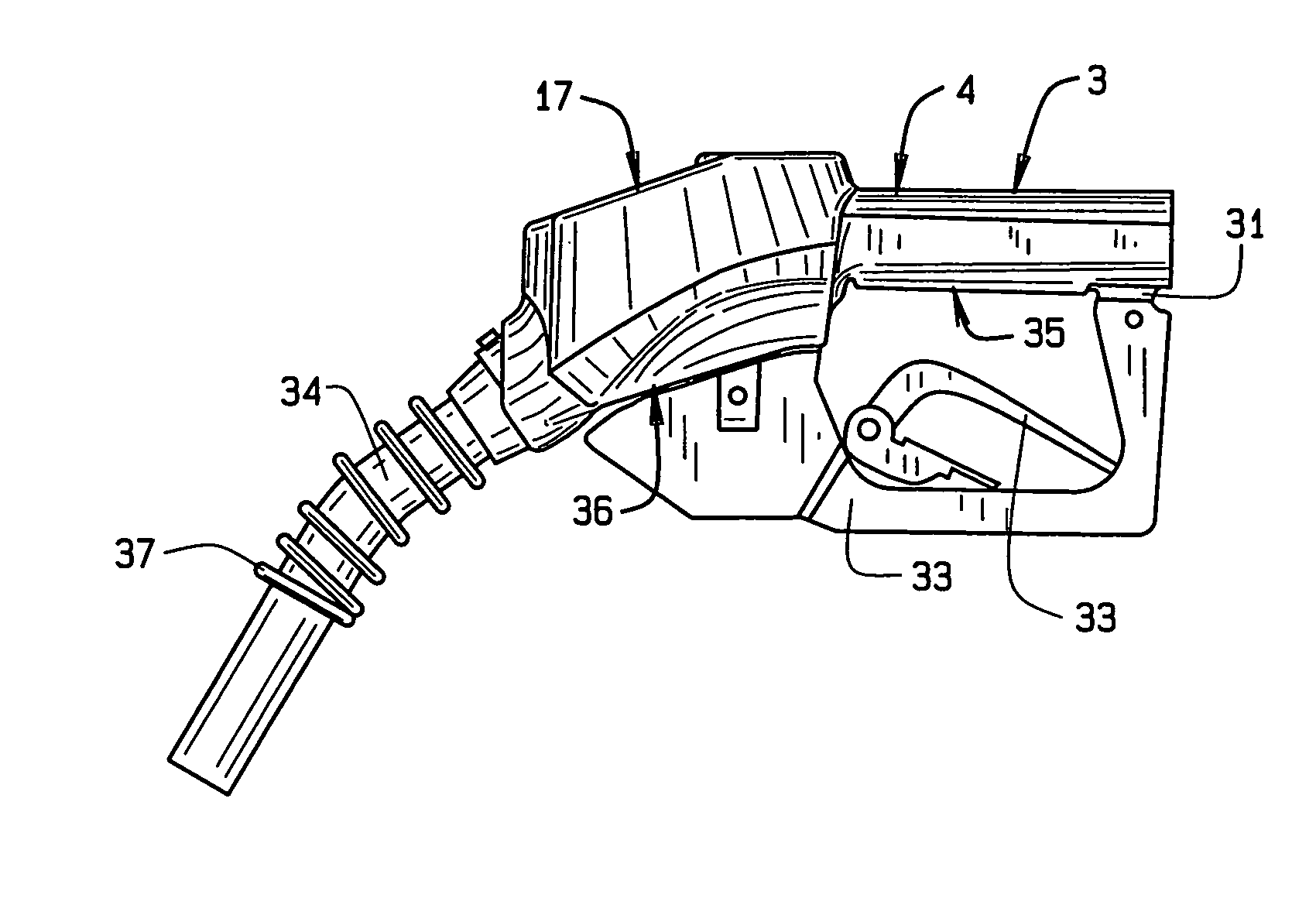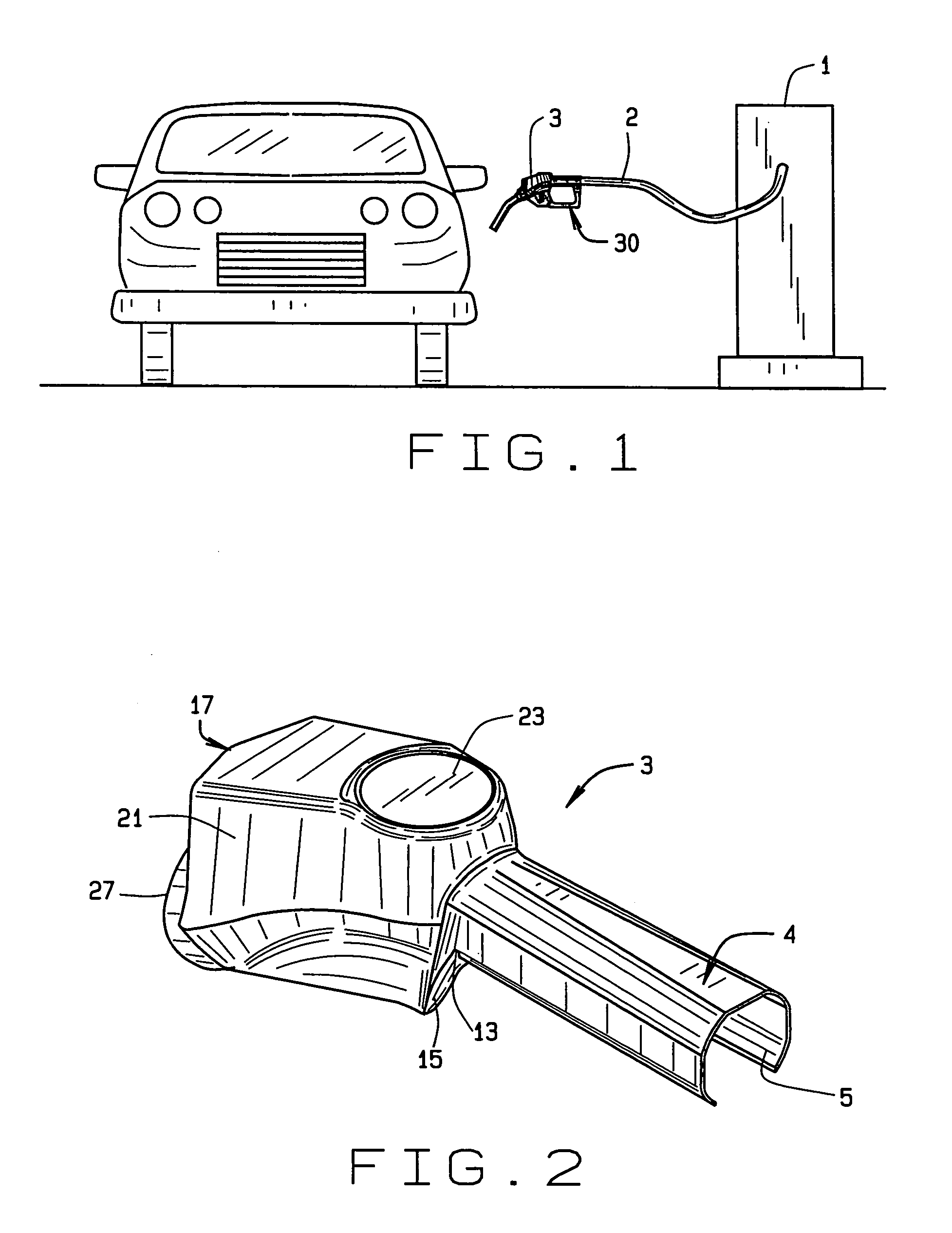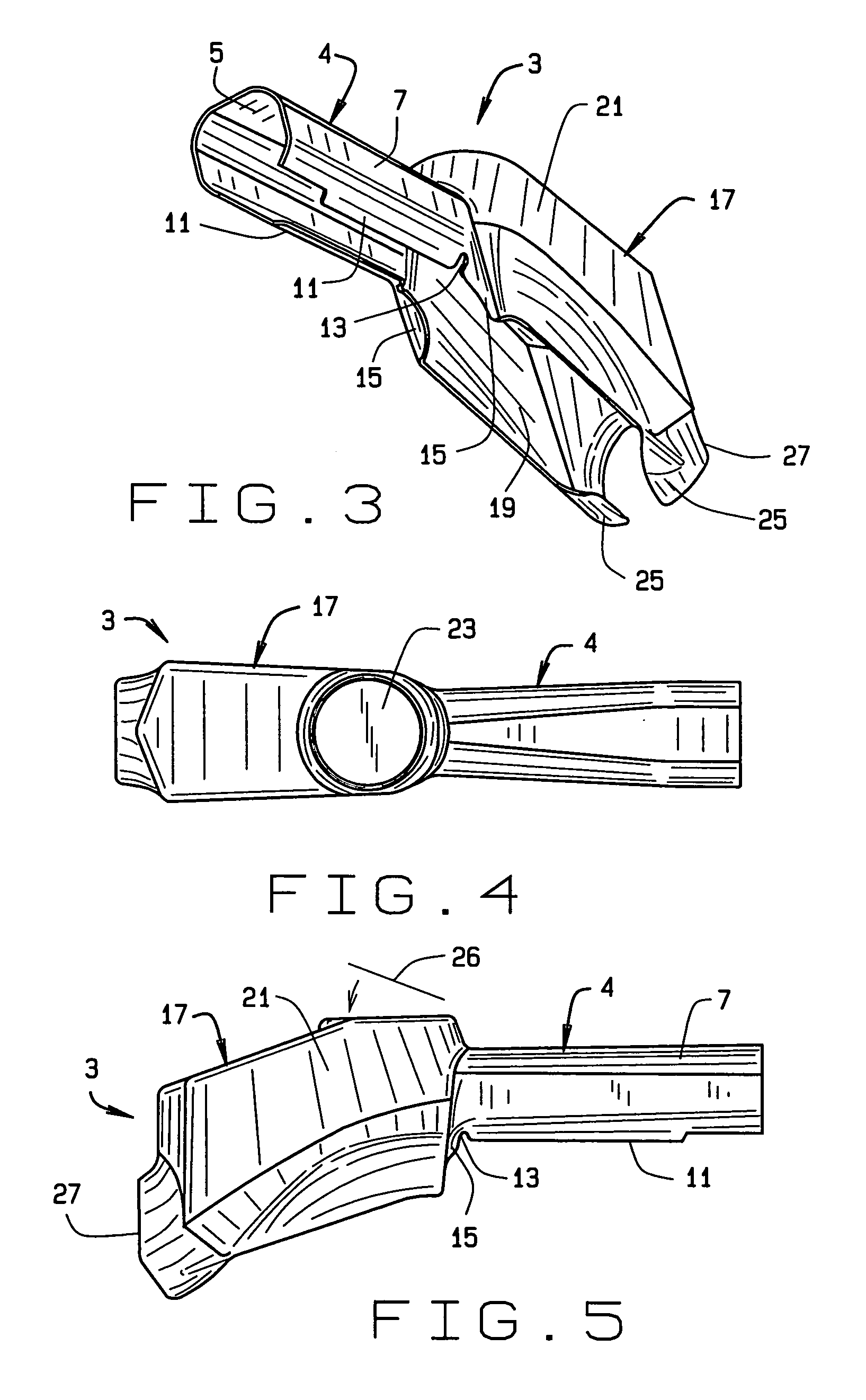Fuel nozzle guard
a technology of fuel nozzles and guards, which is applied in the direction of identification means, instruments, packaged goods, etc., can solve the problems of igniting gasoline vapor changing the electrostatic potential of the nozzle, and still presenting the risk of esd and starting a fire, so as to reduce or eliminate esd and safe dissipation of static charges
- Summary
- Abstract
- Description
- Claims
- Application Information
AI Technical Summary
Benefits of technology
Problems solved by technology
Method used
Image
Examples
Embodiment Construction
[0026]The following detailed description illustrates the invention by way of example and not by way of limitation. The description clearly enables one skilled in the art to make and use the invention, describes several embodiments, adaptations, variations, alternatives, and uses of the invention, including what is presently believed to be the best mode of carrying out the invention.
[0027]As shown in FIG. 1, a fuel pump system includes a fuel pump 1 operatively connected to a fuel hose 2 for communicating fuel to a fuel dispensing nozzle 30. Conventionally, the hose 2 includes an electrical conductor which electrically grounds the nozzle 30 through the pump 1. The fuel nozzle 30 is covered by one embodiment of a static control fuel nozzle guard 3 of the present invention. The nozzle guard 3 is formed of a static control material and is electrically connected to ground through the fuel nozzle 30 and the fuel hose 2 so that electrostatic charges are safely dissipated through the guard ...
PUM
| Property | Measurement | Unit |
|---|---|---|
| surface resistivity | aaaaa | aaaaa |
| flexibility | aaaaa | aaaaa |
| static dissipative | aaaaa | aaaaa |
Abstract
Description
Claims
Application Information
 Login to View More
Login to View More - R&D
- Intellectual Property
- Life Sciences
- Materials
- Tech Scout
- Unparalleled Data Quality
- Higher Quality Content
- 60% Fewer Hallucinations
Browse by: Latest US Patents, China's latest patents, Technical Efficacy Thesaurus, Application Domain, Technology Topic, Popular Technical Reports.
© 2025 PatSnap. All rights reserved.Legal|Privacy policy|Modern Slavery Act Transparency Statement|Sitemap|About US| Contact US: help@patsnap.com



